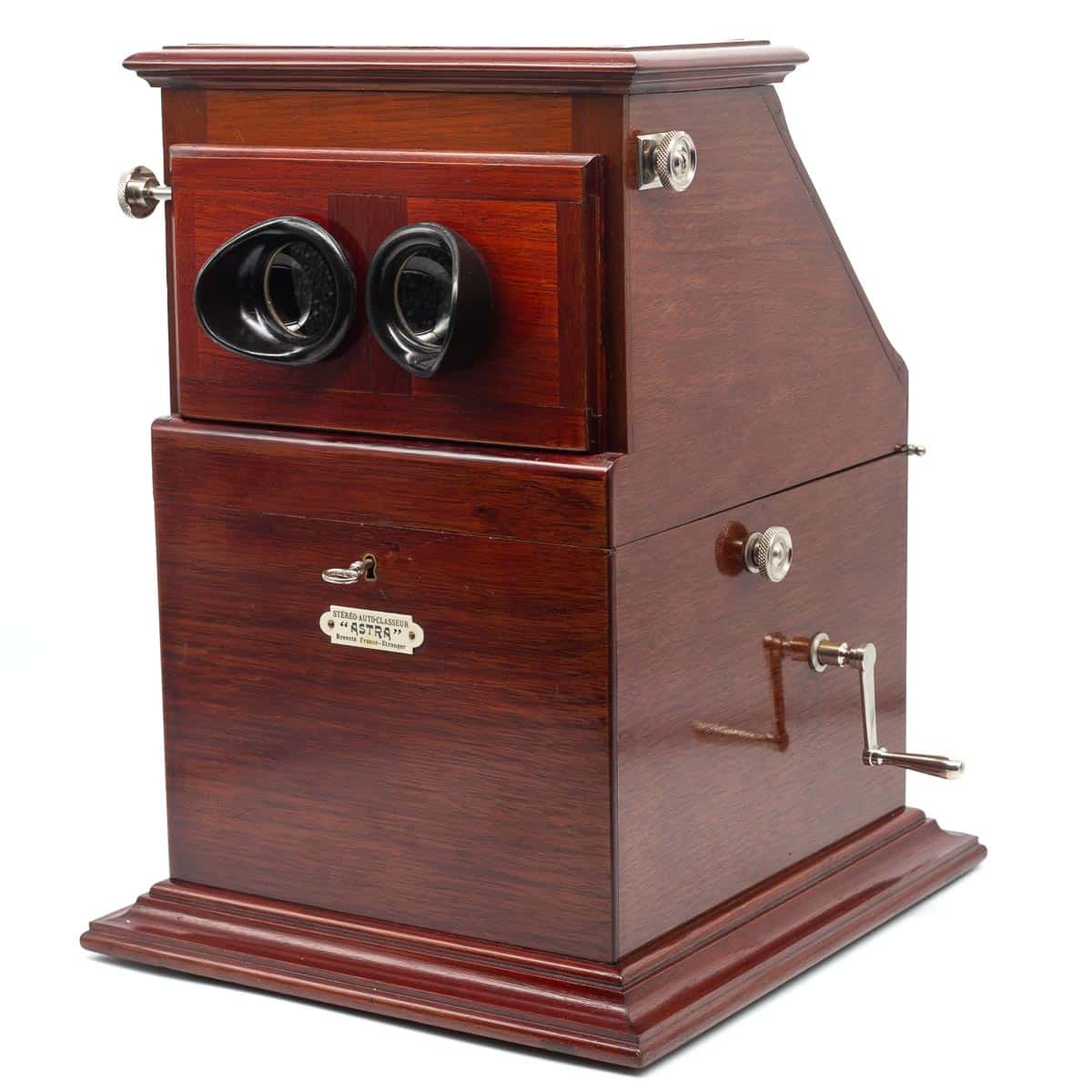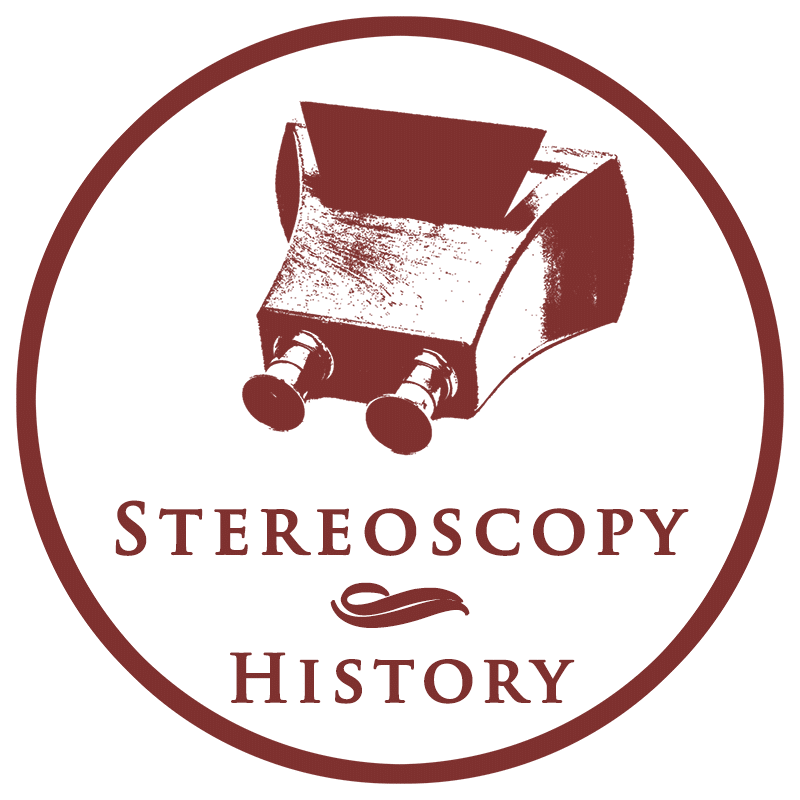
At first glance, L’Astra appears to be an enlarged version of Le Polyphote, but L’Astra offers new functions that require a larger device. An extra frosted glass plate on the inside of the device can be removed to place a projection device or lamp. This is probably the main reason for the larger size of L’Astra. Some models of L’Astra supported the viewing of autochromes. The design for autochrome support was patented by Lucien Bize in 1912.
The autochrome colour process was introduced by the Lumière brothers in 1907, and for stereoscope designers, it meant they had to deal with thicker glass plates. Although the number of autochromes sold was relatively small compared to monochrome plates, it was important for manufacturers to support this novelty. The shown model on the next pages has a button on the left that can be pulled out. In this position, and after a full turn of the crank, the tray with slides is moved over a greater distance to support the thicker autochrome plates. A normal slide tray can contain 24 slides; an autochrome tray contains only 12 slides.
A common design among multi-view tray-based stereoscopes is that the slide tray is placed on a carriage that is moved over a rail. The mechanism of L’Astra is different. The base plate contains a gear and the slide tray has grooves. The rotating gear moves the tray forward over the plate.
In La Nature, the mechanism of L’Astra is described as follows1:
The new design, which distinguishes it from similar devices and makes it foolproof, consists in the elimination of the carriage generally used to place the slide trays… This ensures the operation of the finger which lifts the slides and prevents them from passing in front of or behind the slide, as sometimes happens with other systems. A special feature, operated by means of a button placed on the side of the device, allows the finger to be adjusted depending on whether there are single slides or double slides, which are generally autochromes. The slides always remain engaged in the grooves of the tray, even when they are in position to be in front of the eyepieces. In this way we are always assured that they will fall exactly into their normal position.
Specifications
| Manufacturer: | Robert Pleyau |
| Year of introduction: | 1913 |
| Year of manufacture: | 1913–1915 |
| Type: | Tabletop |
| Viewer: | Multi-view |
| Mechanism: | Tray-based |
| Bidirectional navigation: | Yes |
| Serial number: | None |
| Stereoview support: | Glass |
| Stereoview format: | 6 x 13 cm |
| Number of slides: | 25 |
| Lens focussing: | Yes |
| Inter-ocular adjustment: | Yes |
| Eyepiece blinders: | Yes |
| Dimensions (L x W x H): | 30 x 27 x 37 cm |
| Construction: | Mahogany |
| Other features: | Support for autochromes |
Patent
| Number: | FR4636872 |
| Title: | Stéréoscope classeur |
| Filing date: | 23-12-1912 |
| Publishing date: | 02-03-1914 |
| Applicant(s): | Lucien Bize |
Glossary: autochrome / inter-ocular adjustment / multi-view / tabletop / tray-based
Lucien Bize
Lucien Albert Bize (1866–?) designed a range of innovative and compact stereoscopes in the early 20th century in France. Many names were associated with the manufacturing of his designs. In 1902, Bize patented his first stereoscope design for the detachable hand-held stereoscope that was marketed under the name L’Omnium. His early stereoscope designs were manufactured by Maison Gustave Jacob at 22, Rue Oberkampf in Paris. After Jacob’s bankruptcy in 1911, Bize continued the manufacturing of stereoscopes at 69, Rue Oberkampf.
On 1 January 1913, Bize sold his company to Robert Pleyau. Bize’s last patent was filed in 1912. Pleyau sold a part of his business activities to La Société E. Brose et Cie in 1917, but he remained active as an entrepreneur at 69, Rue Oberkampf. It is unclear if Pleyau sold the business activities that were related to stereoscopes, but it seems that the manufacturing of Bize’s stereoscopes ended during the First World War.
The complete story of Lucien Bize
References
- La Nature (06-12-1913), p. 3. Via: cnum.cnam.fr ↩︎
- Bize, L. (1914) Stéréoscope classeur. Via: data.inpi.fr ↩︎
